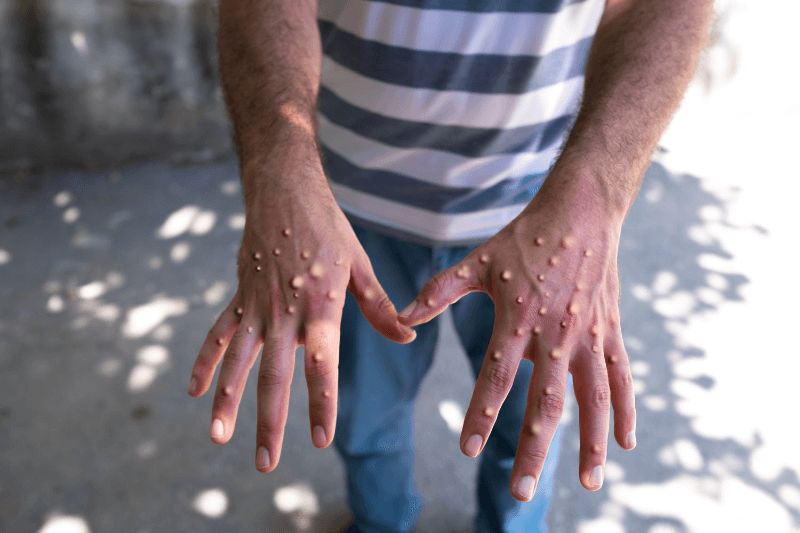The monkey pox virus (MPXV), which causes the disease, is related to the smallpox virus.
In Africa, the last smallpox vaccinations were administered around 1980. As a result, a younger, unvaccinated population is now likely to be infected with MPXV.
Both the African Centres for Disease Control and Prevention and the World Health Organisation (WHO) have declared the latest outbreak of Mpox in Africa to be a health emergency. Following an outbreak in the Democratic Republic of Congo, the disease spread to neighbouring countries and more than 1,400 new cases of smallpox were detected in the space of a week. One of the main strategies for containing the disease is vaccination.
Virologist Anna-Lise Williamson explains how vaccines have evolved and who should be the first to take part in a vaccination campaign.
Who is vaccinated against mpox?
Monkeypox virus (MPXV), which causes the disease, is related to the smallpox virus. Besides the viruses that cause smallpox and monkeypox, a number of other viruses in the orthopoxvirus group infect humans, including cowpox virus, camelpox virus and vaccinia virus.
The Mpox vaccine can provide protection against both strains of MPXV: clades I and II.
Mpox was globally eradicated in 1980 following an intensive global vaccination campaign.
In Africa, the last Mpox vaccinations were administered around 1980. As a result, a younger, unvaccinated population is now susceptible to MPXV infection. Previous types of Mpox vaccine were based on the vaccinia virus and could have serious side-effects, even fatal in rare cases.
How do new-generation vaccines work?
Today we are seeing a move towards new-generation vaccines with a better safety profile. In particular, a vaccine called Jynneos in the United States and Imvanex in Europe, which was widely used during the smallpox epidemic in 2022.
However, they also have drawbacks: their protection may not last as long, they are not yet licensed for children, they are expensive and their availability is limited.
A recently available vaccine is LC16 T. It is approved for use in children.
Keep Reading
Obstacles to the distribution of vaccines in Africa
The cost: Bavarian Nordic, manufacturer of the Jynneos vaccine, was selling its vaccine at USD 110 per dose during the 2022 epidemic.
Countries with low incomes don’t have the budget to buy these vaccines, so they have to wait for WHO approval. Unicef and the Global Vaccine Alliance will then be able to purchase the vaccines for the poorest countries. To accelerate the process, WHO Director-General Tedros Adhanom Ghebreyesus has launched an emergency-use listing procedure for smallpox vaccines to speed up the availability of these medicines to people affected by this public health emergency.
Supply: There is a general shortage of smallpox vaccines, with the United States, Canada and Europe having purchased vaccines to control the spread of smallpox in their high-risk populations.
There have been smallpox epidemics in Africa for many years, but it is only recently that efforts have been made to obtain vaccines for at-risk populations.
Jean Kaseya, Director General of the African Centre for Disease Control, has said that Africa needs 10 million doses to stop the spread of MPXV.
It is highly unlikely that vaccines will be available for the entire population. Monitoring must be stepped up to determine the factors responsible for the spread of the virus. This will allow vaccination campaigns to target those most at risk.
These campaigns should include prophylactic vaccination to stop the spread of MPXV and post-exposure vaccination for those most at risk. This includes people with multiple sexual partners, healthcare workers and laboratory workers.
Persons living in overcrowded health care facilities and in camps for displaced persons should also be targeted. A high number of children are infected and die from smallpox. It is urgent to approve the use of smallpox vaccines in children.

